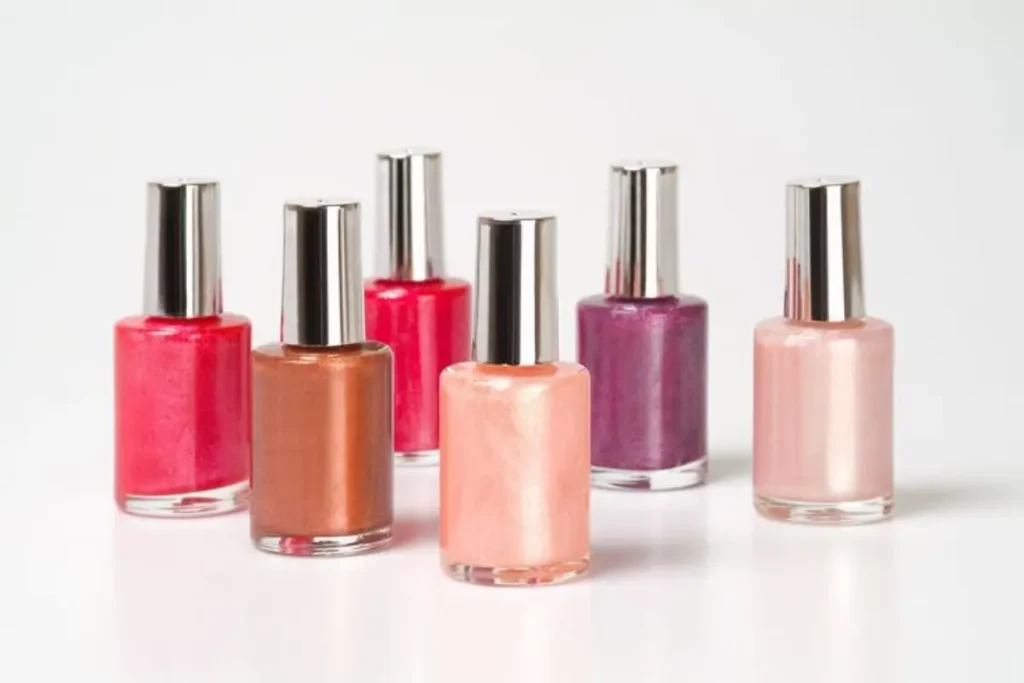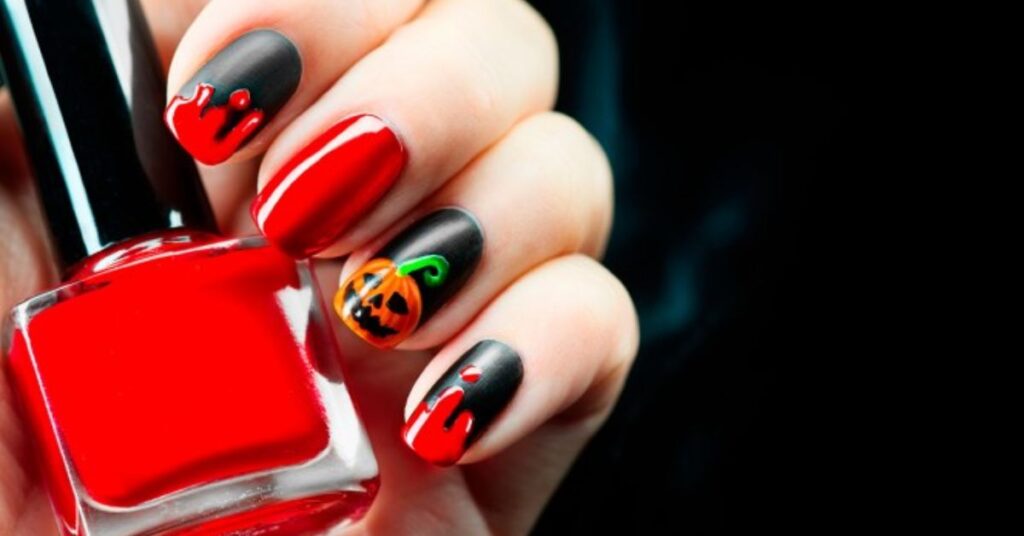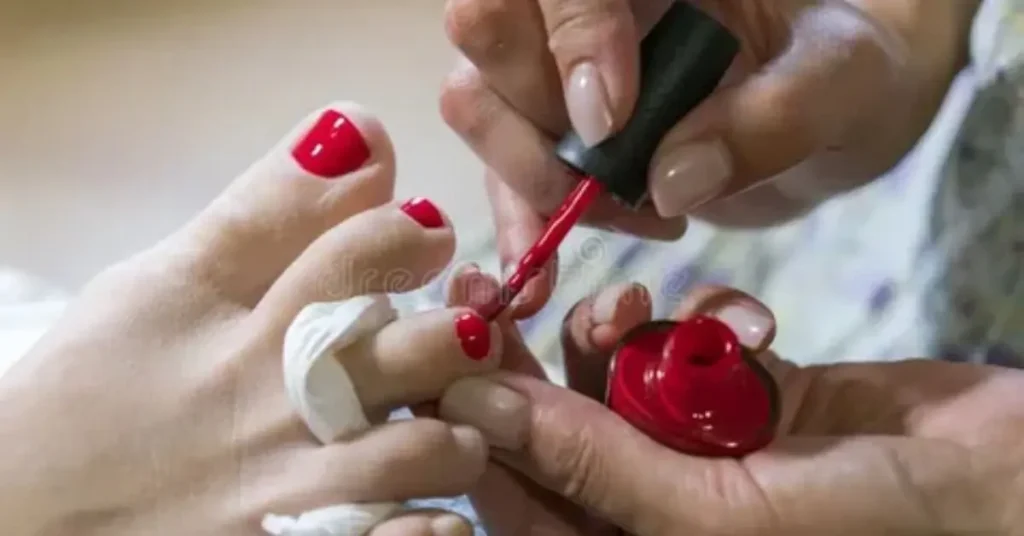Antifungal nail polish functions as a specialized polish which treats fungal infections while providing both decorative color and shiny nail appearance. The product combines ingredients which combat fungus together with components that maintain neat appearance and shiny finish. The product stands as a practical solution for nail fungus patients who need to maintain their grooming habits.
The treatment of persistent nail fungus becomes possible through antifungal nail polish which allows you to maintain your preferred nail color. The concept appears unrealistically perfect. Antifungal nail polish has generated considerable interest because people wonder if it can simultaneously provide medical benefits and attractive nail appearance.
The following article explores the real effectiveness of antifungal nail polish. This article examines antifungal nail polish operation and its active ingredients while sharing user feedback. The following text will interest anyone who has experienced nail fungus or wants fashionable nail protection.
What Is Antifungal Nail Polish?

Nail polish with antifungal properties serves as a specific treatment solution which fights nail fungus while maintaining attractive nail appearance. Regular polish differs from antifungal polish because it includes active ingredients which protect against fungus and enhance nail health. People who have discolored or brittle or infected nails choose this product to maintain a neat appearance. The product serves as a convenient method to merge medical care with attractive nail aesthetics.
Why It’s Gaining Popularity
Antifungal nail polish combines fungal infection treatment with nail polish aesthetics to protect nails from infections. Regular nail polish manicure styles differs from this product because it includes active components which combat nail fungus. This treatment solution has become popular because it provides dual benefits for both infection management and attractive nail appearance.
Understanding Nail Fungus
The common fungal infection of nails creates discoloration and thickening alongside brittleness in the toenails and fingernails. The initial sign of nail fungus appears as a tiny white or yellow mark beneath the nail which might extend if treatment is delayed. The fungi which thrive in hot and moist areas such as sweaty footwear and public bathing facilities cause this infection. Nail fungus starts without pain but turns into both uncomfortable and difficult to treat as time passes.
Common Causes of Nail Fungus
Onychomycosis is a fungal infection which mainly targets toenails instead of fingernails and exists in substantial numbers of people. The first sign of nail fungus shows up as white or yellow spots under the nail which later turns into nail discoloration before causing nail thickening and ending with nail crumbling. Some common causes include:
- Moist environments like sweaty shoes or public showers
- Poor foot hygiene
- Wearing tight or non-breathable footwear
- Weakened immune system or diabetes
Understanding the root causes can help in preventing future infections and choosing the right treatment.
Symptoms and Risks of Leaving It Untreated

The initial symptoms of nail fungus appear as discoloration alongside thickening of the nails. Nail fungus develops progressively without treatment until it causes nail discomfort together with permanent nail damage. The infection sometimes moves from an infected nail to spread to other nails together with nearby skin regions.
Common symptoms include:
- Yellow, white, or brown spots on the nail
- Brittle or crumbly nail texture
- A foul odor or separation of the nail from the nail bed
Ignoring these signs can make treatment more difficult later, so early action is key.
What Is Antifungal Nail Polish Made Of?
Nail polishes with antifungal properties have active agents which treat fungal infections while maintaining attractive nail appearance. Antifungal nail polish replaces traditional components with two active substances ciclopirox and undecylenic acid. The antifungal products include active components that destroy fungus while also stopping its spread. People need this product for fungal infection treatment as it helps them preserve their attractive nails.
Key Active Ingredients
Antifungal nail polish contains special compounds which specifically target fungal infections and help restore nail health while eliminating the infection. The active components of antifungal nail polish consist of amorolfine together with ciclopirox and terbinafine that either break fungal cell membranes or block fungal growth. The antifungal agents receive support from vitamin E and tea tree oil to protect nails from reinfection while strengthening their condition. These ingredients work together to provide successful fungal treatment without damaging nail health.
How These Ingredients Fight Fungus
Nail polish that fights fungus contains active substances including clotrimazole and tea tree oil and undecylenic acid which specifically destroy fungal infections. The active components break down fungal cell walls through their mechanism to stop fungal growth and prevent additional spread. The regular use of this product allows it to penetrate deeply into the nail tissue to fight infections and support new healthy nail growth. The polish functions as both a therapeutic agent and a protective layer which prevents fungus from returning.
How Antifungal Nail Polish Works
The medicated antifungal nail polish functions as both a treatment for nail fungus and a cosmetic solution for the nails. The antifungal agents amorolfine or ciclopirox in this special polish penetrate nails to fight infections.
The Application Process
Use the polish on clean dry nails by covering all surfaces. The complete drying process must occur before another application according to the recommended frequency which is typically once or twice per week to keep it effective.
Penetration and Protection Mechanism
The antifungal substances in the product penetrate nail layers to stop fungal growth. The protective barrier created by the polish enables healing of the nail while stopping new infections from occurring.
Combining Polish with Other Treatments
For severe cases, pair antifungal polish with oral medications or topical creams. The combination of these treatment methods accelerates recovery time by improving their effectiveness. Proper application of antifungal nail polish combined with suitable complementary treatments helps patients achieve healthy nails.
Pros and Cons of Antifungal Nail Polish
Medicated antifungal nail polish serves both therapeutic purposes for nail fungal infections and decorative functions as a cosmetic product. Antifungal agents amorolfine or ciclopirox present in antifungal nail polish distinguish this product from basic nail polish for treating nail fungal infections.
Benefits of Using It
Medical antifungal nail polish functions to both treat fungal infections and enhance nails by providing cosmetic benefits for unattractive nail appearance. The direct application of medication at the infection site through this method heals faster than oral medications because they create various adverse effects.
Limitations and Considerations
The treatment provides convenience but needs several months to work effectively and proves less successful for serious infections. Success depends on the correct preparation of nails along with regular application. Certain nail treatments have both drying effects and irritating properties. A doctor consultation helps patients make proper treatment decisions.
Who Should Use Antifungal Nail Polish?

Antifungal nail polish serves as a home-based solution that treats light to moderate fungal nail infections. The product shows most effectiveness for patients with fresh fungal infections or discolored or brittle nails or those who want to prevent using prescription drugs. The treatment method should not be used by people suffering from severe fungal infections or serious health issues.
Suitable Candidates
- Individuals with mild fungal nail infections (discoloration, thickening).
- Those preferring over-the-counter treatments before consulting a doctor.
- People with no underlying health issues (e.g., diabetes, immune disorders)
Who Should Consult a Doctor First
- Severe infections (pain, swelling, spreading infection).
- Diabetics or those with weakened immune systems.
- No improvement after several weeks of use.
Always seek medical advice if unsure about your condition.
Tips for Best Results
To maximize the effectiveness of your antifungal nail polish, follow these essential guidelines for proper application and nail care:
Proper Application Techniques
- Begin the procedure by having completely dry nails which requires washing and thorough drying of both feet and hands.
- Apply thin and uniform layers of polish to cover every part of the nail surface including the sides and the base of the nail tip.
- The drying time between coats should be between two and three minutes to avoid smudging and maximize absorption.
- Follow the recommended directions for application which could require daily or weekly applications based on product instructions.
Nail Care Habits to Boost Effectiveness
- Regular trimming and filing of nails maintains their short length along with their smooth texture which decreases fungal growth areas.
- Nail tools should receive disinfection treatment after every use to stop reinfection from happening.
- Wear socks that wick moisture and breathable footwear to maintain dry feet because fungus spreads best in humid conditions.
- Sharing nail clippers and files along with nail polish should be avoided because they can spread infections to others.
For best results, maintain a consistent routine and follow the full treatment period, even if nails appear improved, to ensure the fungus is completely eliminated.
FAQs
Do antifungal nail polishes work?
A fungal nail infection cannot be eliminated through topical treatments like creams or polishes. The treatment with tablets proves highly effective while requiring less time than other methods. Although the serious risks are extremely rare some people must avoid taking tablets.
What kills toe fungus permanently?
The prescription of oral antifungal medication provides treatment for fungus infections. The available medications for treatment include terbinafine, itraconazole and fluconazole. The treatment requires daily medication consumption extending beyond several months into the future.
What product kills nail fungus?
Your health care provider will prescribe either efinaconazole or tavaborole as antifungal cream treatment. You should apply the product onto infected nails following soaking. The application of these creams tends to be more effective when used after thinning your nails.
How often should I apply antifungal nail polish?
Apply the Loceryl antifungal lacquer to the full surface of infected nails or all infected nails. The infection can hide in uninfected areas while spreading throughout the nail therefore you should apply the treatment to the entire nail surface. Apply the Locery antifungal lacquer to the entire surface of infected nails once a week.
What are the side effects of antifungal nail polish?
Users might encounter minimal skin reactions which produce redness or irritation together with itching around their nail region when using antifungal nail polish. Repeated use of antifungal nail polish can lead users to develop dry nails along with brittle nails. The combination of swelling and rash together with allergic reactions appears very infrequently among users who apply antifungal nail polish.
Conclusion
Proper application of antifungal nail polish successfully treats the mild to moderate nail fungal infections. The antifungal nail polish treatment needs daily application together with proper nail maintenance and requires completion according to the specified duration. The usage of antifungal nail polish can lead to positive effects on nails which become visible after several weeks to months of application.
Severe infections need oral medications and laser therapy together with antifungal nail polish for their treatment. Do consult medical professionals when current symptoms weaken or become aggravated. When antifungal nail polish is used correctly along with sufficient patience the treatment produces healthy nails.






